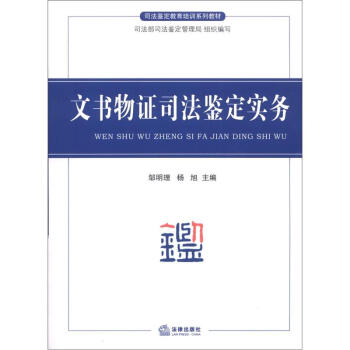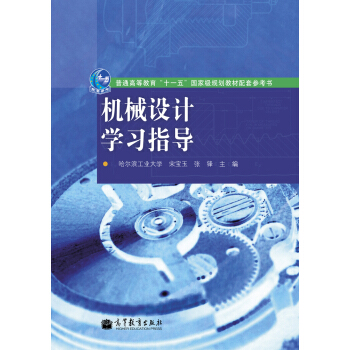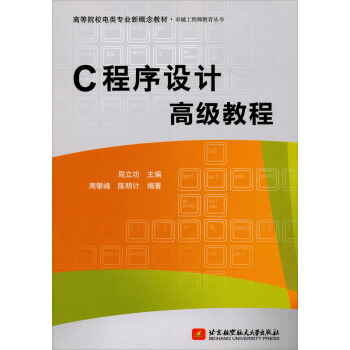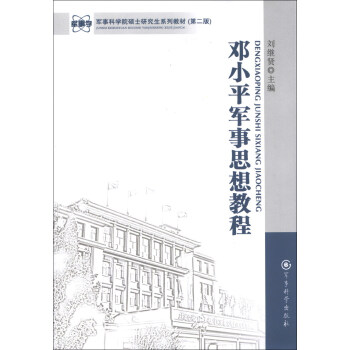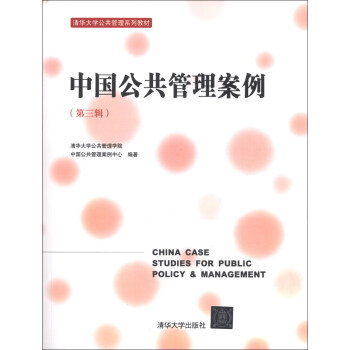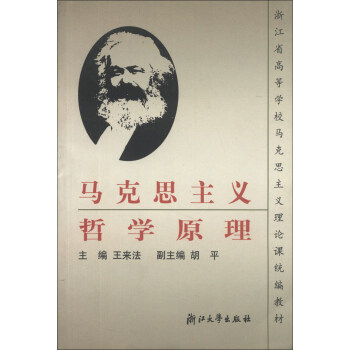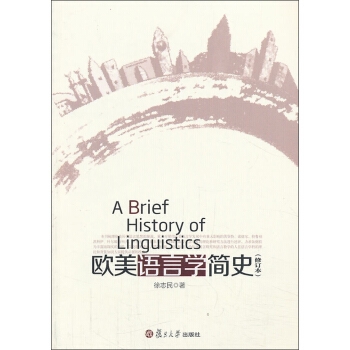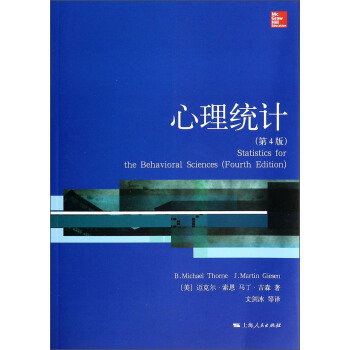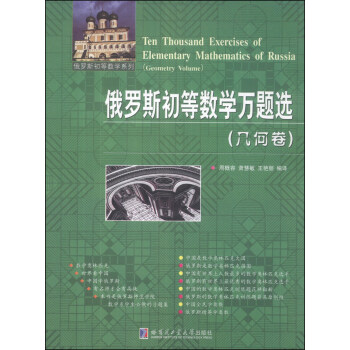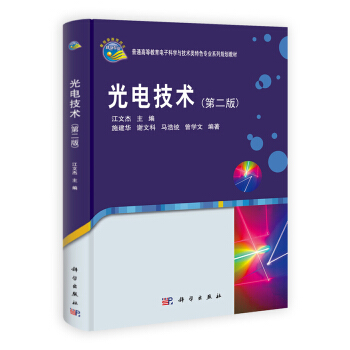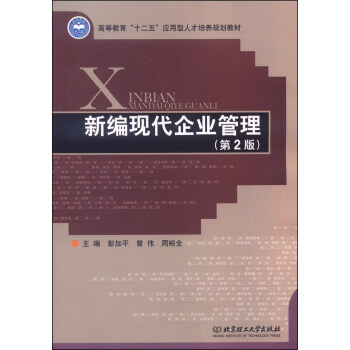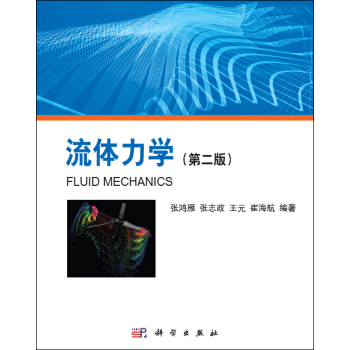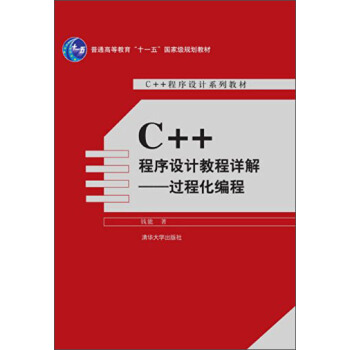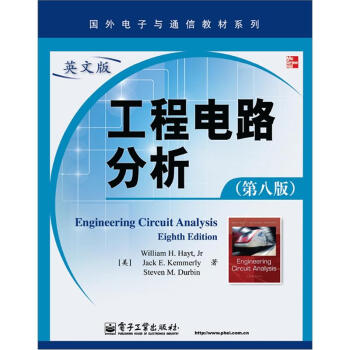

具体描述
内容简介
《工程电路分析(第8版)(英文版)》首版于1962年,目前已是第八版。作者从3个最基本的科学定律推导出电路分析中常用的分析方法及分析工具。书中首先介绍电路基本参量及基本概念,然后结合基尔霍夫电压和电流定律,介绍节点和网孔分析法及叠加定理、电源变换等常用电路分析方法,并将运算放大器作为电路元件加以介绍;交流电路的分析开始于电容、电感的时域电路特性,然后分析RLC电路的正弦稳态响应,并介绍交流电路的功率分析方法,接着还对多相电路、磁耦合电路的性能分析进行了介绍;本书还介绍了复频率、拉普拉斯变换和s域分析、频率响应、傅里叶分析、二端口网络等内容。作者注重将理论和实践相结合,无论例题、练习、章后习题还是正文中的应用实例,很多都来自于业界的典型应用,这也是本书的一大特色。目录
INTRODUCTION
1.1 Overview of Text
1.2 Relationship of Circuit Analysis to Engineering
1.3 Analysis and Design
1.4 Computer-Aided Analysis
1.5 Successful Problem-Solving Strategies
READING FURTHER
CHAPTER 1 BASIC COMPONENTS AND ELECTRIC CIRCUITS
2.1 Units and Scales
2.2 Charge, Current, Voltage, and Power
2.3 Voltage and Current Sources
2.4 Ohm’s Law
SUMMARYAND REVIEW
READING FURTHER
EXERCISES
CHAPTER 2 VOLTAGE AND CURRENT LAWS
3.1 Nodes, Paths, Loops, and Branches
3.2 Kirchhoff’s Current Law
3.3 Kirchhoff’s Voltage Law
3.4 The Single-Loop Circuit
3.5 The Single-Node-Pair Circuit
3.6 Series and Parallel Connected Sources
3.7 Resistors in Series and Parallel
3.8 Voltage and Current Division
SUMMARYAND REVIEW
READING FURTHER
EXERCISES
CHAPTER 3 BASIC NODAL AND MESH ANALYSIS
4.1 Nodal Analysis
4.2 The Supernode
4.3 Mesh Analysis
4.4 The Supermesh
4.5 Nodal vs. Mesh Analysis: A Comparison
4.6 Computer-Aided Circuit Analysis SUMMARY AND REVIEW READING FURTHER EXERCISES
CHAPTER 4 HANDY CIRCUIT ANALYSIS TECHNIQUES
5.1 Linearity and Superposition
5.2 Source Transformations
5.3 Thévenin and Norton Equivalent Circuits
5.4 Maximum Power Transfer
5.5 Delta-Wye Conversion
5.6 Selecting an Approach: A Summary of Various Techniques
CHAPTER 5 THE OPERATIONAL
6.1 Background
6.2 The Ideal Op Amp:
6.3 Cascaded Stages
6.4 Circuits for Voltage
6.5 Practical Considerations
6.6 Comparators and
CHAPTER 6 CAPACITORS AND
7.1 The Capacitor
7.2 The Inductor
7.3 Inductance and
7.4 Consequences
7.5 Simple Op Amp
7.6 Duality
7.7 Modeling Capacitors and Inductors with PSpice
CHAPTER 7
BASIC RL AND RC CIRCUITS
8.1 The Source-Free RL Circuit
8.2 Properties of the Exponential Response
8.3 The Source-Free RC Circuit
8.4 A More General Perspective
8.5 The Unit-Step Function
8.6 Driven RL Circuits
8.7 Natural and Forced Response
8.8 Driven RC Circuits
8.9 Predicting the Response of Sequentially Switched Circuits
CHAPTER 8
THE RLC CIRCUIT 1
9.1 The Source-Free Parallel Circuit 1
9.2 The Overdamped Parallel RLC Circuit
9.3 Critical Damping
9.4 The Underdamped Parallel RLC Circuit
9.5 The Source-Free Series RLC Circuit
9.6 The Complete Response of the RLC Circuit
9.7 The Lossless LC Circuit
CHAPTER 9 SUMMARY AND REVIEW READING FURTHER EXERCISES SINUSOIDAL STEADY-STATE ANALYSIS
10.1 Characteristics of Sinusoids
10.2 Forced Response to Sinusoidal Functions
10.3 The Complex Forcing Function
10.4 The Phasor
10.5 Impedance and Admittance
10.6 Nodal and Mesh Analysis
10.7 Superposition, Source Transformations and Thévenin’s Theorem
10.8 Phasor Diagrams
CHAPTER 10 AC CIRCUIT POWER ANALYSIS
11.1 Instantaneous Power
11.2 Average Power
11.3 Effective Values of Current and Voltage
11.4 Apparent Power and Power Factor
11.5 Complex Power
CHAPTER 11 POLYPHASE CIRCUITS
12.1 Polyphase Systems
12.2 Single-Phase Three-Wire Systems
12.3 Three-Phase Y-Y Connection
12.4 The Delta (_) Connection
12.5 Power Measurement in Three-Phase Systems
CHAPTER 12 MAGNETICALLY COUPLED CIRCUITS
13.1 Mutual Inductance
13.2 Energy Considerations
13.3 The Linear Transformer
13.4 The Ideal Transformer
CHAPTER 13 COMPLEX FREQUENCY AND THE LAPLACE TRANSFORM 3
14.1 Complex Frequency 3
14.2 The Damped Sinusoidal Forcing Function
14.3 Definition of the
精彩书摘
Voltage We must now begin to refer to a circuit element, something best defined in general terms to begin with.Such electrical devices as fuses, light bulbs, re-sistors, batteries, capacitors, generators, and spark coils can be represented by combinations of simple circuit elements.We begin by showing a very general circuit element as a shapeless object possessing two terminals at which connections to other elements may be made (Fig.2.8).There are two paths by which current may enter or leave the element.In subsequent discussions we will define particular circuit elements by describ-ing the electrical characteristics that may be observed at their terminals.In Fig.2.8, let us suppose that a dc current is sent into terminal A,through the general element, and back out of terminal B.Let us also assume that pushing charge through the element requires an expenditure of energy.We then say that an electrical voltage (or a potential difference) exists be-tween the two terminals, or that there is a voltage "across" the element.Thus, the voltage across a terminal pair is a measure of the work required to move charge through the element.The unit of voltage is the volt,2 and 1 volt is the same as 1 J/C.Voltage is represented by V or v.A voltage can exist between a pair of electrical terminals whether a current is flowing or not.An automobile battery, for example, has a voltage of 12 V across its terminals even if nothing whatsoever is connected to the terminals.According to the principle of conservation of energy, the energy that is expended in forcing charge through the element must appear somewhere else.When we later meet specific circuit elements, we will note whether that energy is stored in some form that is readily available as electric energy or whether it changes irreversibly into heat, acoustic energy, or some other nonelectrical form.We must now establish a convention by which we can distinguish be-tween energy supplied to an element and energy that is supplied by the element itself.We do this by our choice of sign for the voltage of terminalA with respect to terminal B.If a positive current is entering terminal A of the element and an external source must expend energy to establish this cur-rent, then terminal A is positive with respect to terminal B.(Alternatively,we may say that terminal B is negative with respect to terminal A.)前言/序言
用户评价
在我的工程学习生涯中,有幸接触过不少关于电路分析的书籍,但"Engineering Circuit Analysis (8th Edition)"无疑是其中最令人印象深刻的一本。这本书不仅仅是一本教材,更像是一本可以反复研读的参考手册。它的内容深度和广度都达到了非常高的水平,对于那些希望深入理解电路理论精髓的工程师来说,这本书绝对是不可多得的宝藏。作者在讲解一些高级概念时,例如二端口网络、耦合电感等,展现了深厚的功底,并且能够将复杂的数学推导转化为清晰易懂的步骤。我尤其欣赏书中对各种分析方法的对比和权衡,作者会详细分析不同方法在特定问题下的优缺点,引导读者根据实际情况选择最合适的方法,而不是死记硬背。此外,这本书的附录内容也相当丰富,包含了各种元件的参数、常用公式汇总等,这些都是我们在日常工程实践中经常会用到的信息。总而言之,这本书的价值远不止于课堂教学,它能够陪伴工程师们度过整个职业生涯,不断地为我们提供解决复杂电路问题的灵感和工具。
评分作为一名刚入门电子工程领域的学生,我在寻找一本能够系统性地梳理电路知识的教材时, stumbled upon "Engineering Circuit Analysis (8th Edition)". 尽管这本书的篇幅不小,但它的内容组织方式却非常清晰,循序渐进。从最基础的电阻、电容、电感概念,到复杂的叠加定理、节点电压法、网孔电流法,再到AC电路分析和瞬态响应,每一个章节都建立在前一章节的基础上,让初学者能够逐步建立起对电路的直观认识。书中大量的例题,涵盖了不同难度和应用场景,是帮助我们巩固知识、理解理论的最佳实践。我尤其喜欢书中对概念的深入解释,不仅仅是给出公式,更会探讨公式背后的物理意义,以及在实际工程中可能遇到的问题。例如,在讲解电容的瞬态充电过程时,作者不仅展示了数学推导,还通过生动的类比,让我们更容易理解电荷如何逐渐积累,以及时间常数的作用。对于初学者来说,这种详尽的讲解方式能够有效避免“只知其然,不知其所以然”的情况,为后续更深入的学习打下坚实的基础。这本书的图示也非常精美,清晰的电路图和波形图能够极大地帮助我们理解抽象的概念,减少了阅读的疲劳感,让我能够更专注于知识本身。
评分从一个对电子世界充满好奇的业余爱好者角度来说,"Engineering Circuit Analysis (8th Edition)"这本书简直就是打开新世界大门的钥匙。虽然一开始接触到一些数学公式可能会有些吓人,但作者的讲解方式非常友好,他会用通俗易懂的语言来解释每一个概念,并且配合大量的图示,让整个学习过程变得生动有趣。我尤其喜欢书中对“功率”这个概念的讲解,以及如何计算和优化电路中的功率消耗。这让我对日常的用电有了一个全新的认识。这本书也让我明白,看似复杂的电子产品,其核心原理都是基于这些基本的电路分析方法。它不仅仅是关于“电路”,更是关于“系统”的思考方式。通过学习这本书,我不仅掌握了分析电路的能力,更培养了一种解决问题的逻辑思维。即使是生活中遇到的简单电路问题,我现在也能用更加系统和科学的方法去分析和解决,这让我对自己的学习能力和解决问题的信心都大大提升。
评分我必须说,"Engineering Circuit Analysis (8th Edition)"这本书的逻辑结构实在是太棒了。它就像一位经验丰富的老师,知道如何一步一步地引导你,让你在不知不觉中掌握复杂的知识。从最基础的欧姆定律和基尔霍夫定律开始,作者非常耐心地解释了每一种元件的特性,以及它们在电路中的作用。我特别喜欢书中对“简化”和“建模”的强调,这对于我们理解实际电路至关重要。很多时候,我们在处理复杂的电路时,都需要将其简化成更容易分析的模型。这本书就提供了很多实用的技巧和方法,让我们能够有效地进行这种简化。而且,书中对各种定理的应用,例如戴维宁定理和诺顿定理,都进行了非常详尽的讲解,并且通过大量的实例展示了它们在解决实际问题中的强大能力。我常常会在遇到某个难题时,翻开这本书,找到相应的章节,然后通过书中的方法迅速找到解决思路。这种“查阅式”的学习方式,让这本书成为了我案头的常备工具书。
评分作为一个资深的电气工程师,我可以说"Engineering Circuit Analysis (8th Edition)"是市面上为数不多的能够兼顾理论深度和实践应用的书籍。它在分析方法上的严谨性以及对实际工程问题的关注,都让我印象深刻。书中对于AC电路的讲解尤其出色,从复数运算到三相电路,再到功率因数校正,每一个环节都讲解得非常透彻,并且提供了大量的工程实例,让我们能够看到理论知识如何在实际中得到应用。我记得有一次,我遇到了一个关于功率因数的问题,当时脑子里一团模糊,翻开这本书,找到了相关章节,通过书中提供的计算方法和解释,很快就理清了思路,并找到了解决方案。这本书的价值在于它不仅仅教你“怎么做”,更教你“为什么这么做”,让你能够真正理解背后的原理,从而举一反三,解决各种复杂的工程难题。对于需要不断更新知识、解决工程问题的工程师来说,这本书无疑是一笔宝贵的财富。
评分再说说买这本书吧,想想工作这么长时间以来,也看了不少的专业书籍,发现国人写的书很少有值得一看的。如果要找专业性的来书籍来看的话,会发现雷同的东西真不少,国家每年投入了多大的财力呀,出了真TM多的科研成果啊。怪不得人家老外说的:中国的大学就是一个笑话,想买一本原版的书来看看,说实话,个人的英文水平实在是有限,就当有时间一边补英语一边练习专业能力了。也许是这本书难找吧,等了几天呢,好在本人不是很着急。书拿到手中感觉到还行,质量好,空了晒单吧
评分加强重点专业领域建设。中央在100所示范院校中,选择500个左右办学理念先进、产学结合紧密、特色鲜明、就业率高的专业进行重点支持。造就一批基础理论扎实、教学实践能力突出的专业带头人和教学骨干这才是工作的重点
评分非常好的书,比原版便宜很多,影印的质量对得起价格
评分包装质量还都可以,就是纸张略薄。
评分再说说买这本书吧,想想工作这么长时间以来,也看了不少的专业书籍,发现国人写的书很少有值得一看的。如果要找专业性的来书籍来看的话,会发现雷同的东西真不少,国家每年投入了多大的财力呀,出了真TM多的科研成果啊。怪不得人家老外说的:中国的大学就是一个笑话,想买一本原版的书来看看,说实话,个人的英文水平实在是有限,就当有时间一边补英语一边练习专业能力了。也许是这本书难找吧,等了几天呢,好在本人不是很着急。书拿到手中感觉到还行,质量好,空了晒单吧
评分1111111!11111
评分1111111!11111
评分加强重点专业领域建设。中央在100所示范院校中,选择500个左右办学理念先进、产学结合紧密、特色鲜明、就业率高的专业进行重点支持。造就一批基础理论扎实、教学实践能力突出的专业带头人和教学骨干这才是工作的重点
评分讲的内容很详细,很实用
相关图书
本站所有内容均为互联网搜索引擎提供的公开搜索信息,本站不存储任何数据与内容,任何内容与数据均与本站无关,如有需要请联系相关搜索引擎包括但不限于百度,google,bing,sogou 等
© 2026 book.tinynews.org All Rights Reserved. 静思书屋 版权所有

